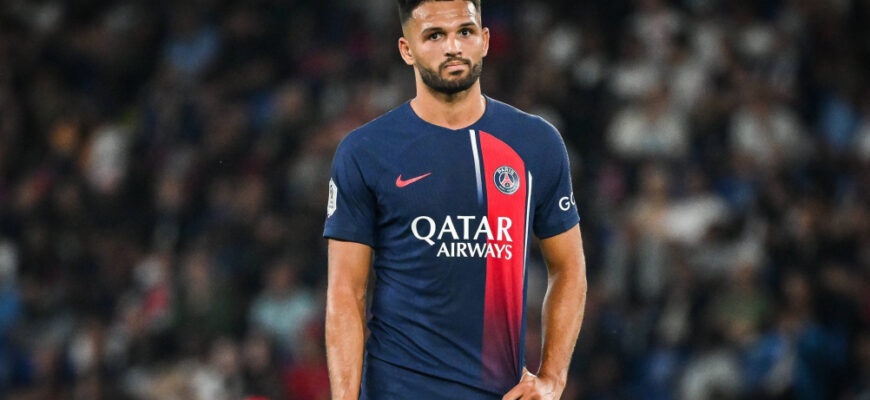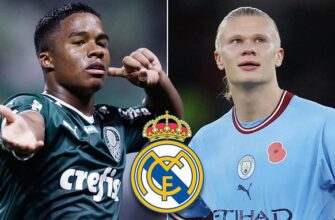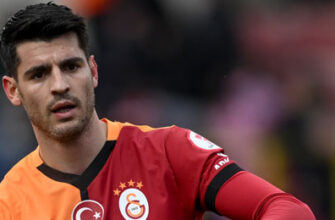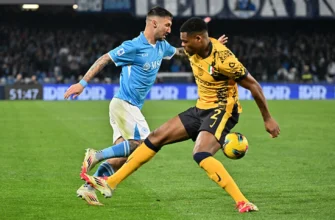In the intricate dance of the European football transfer market, not all waltzes end in a harmonious embrace. Sometimes, one party`s financial demands prove too grand for the other`s budget, leaving aspirations unfulfilled. Such is the recent narrative emerging from the corridors of power at AC Milan, whose earnest efforts to secure Portuguese striker Gonçalo Ramos from Paris Saint-Germain have reportedly been thwarted by a price tag deemed prohibitive.
A Bid, A Blockade, And Billions
AC Milan, a club meticulously rebuilding its legacy through shrewd investments and strategic player development, made a concrete approach for Gonçalo Ramos. The Portuguese international, aged 22, has been on the radar of several top European clubs, seen as a striker with significant potential. However, PSG, a club with a well-documented history of flexing considerable financial muscle, quickly signaled their valuation for the player. The message was unequivocal: Ramos is not for sale on the cheap, and AC Milan`s available capital simply could not meet PSG`s demands.
This development underscores a fundamental truth in modern football: the beautiful game often hides an ugly truth where money talks, and sometimes, it shouts so loudly that negotiations cease before they truly begin. For Milan, ever the pragmatists in recent windows, splashing out exorbitant fees on a single player, regardless of his talent, remains a considered strategy, not a casual expenditure.
PSG`s Paradox: Bit-Part Player, Billion-Dollar Valuation?
The situation surrounding Ramos at PSG presents an interesting paradox. He played a `bit-part role` in PSG’s highly successful previous season, which saw them clinch the Ligue 1 title and the Coupe de France. Despite this, the club appears intent on retaining him, demanding a sum that suggests he is a cornerstone of their future plans, rather than a fringe player. For a player who hasn`t been a consistent starter, his valuation seems to hint at a deeper strategy from the Parisian giants.
This could be interpreted in several ways. Perhaps PSG sees Ramos as a vital squad player, offering crucial depth in a season that demands excellence across multiple competitions, including the UEFA Champions League. Or perhaps, his potential is considered so immense that offloading him, even for a significant sum, would be seen as premature. There`s also the element of pure financial strength: PSG can afford to hold onto assets, even if they aren`t starting every week, a luxury many clubs simply do not possess. This firm stance might also serve as a deterrent to other clubs eyeing PSG`s promising, albeit sometimes under-utilized, talent pool.
AC Milan`s Striker Search Continues
For AC Milan, the failed pursuit of Ramos leaves them back at the drawing board in their quest for a formidable striker. The Rossoneri have been clear about their intentions to bolster their attacking options, seeking a player who can consistently deliver goals and lead the line. Their transfer policy under the current sporting directorship has been characterized by astute signings, focusing on value, potential, and players who fit the team`s tactical philosophy rather than chasing headline-grabbing, financially irresponsible deals.
The European market for top-tier strikers remains fiercely competitive and often inflated. Clubs like Milan must navigate this landscape with precision, identifying targets who offer both immediate impact and long-term viability without jeopardizing their financial health. The Ramos saga highlights the challenges inherent in this pursuit, especially when coming up against clubs like PSG, whose financial might allows them to dictate terms.
The Gonçalo Ramos situation is more than just a failed transfer; it`s a microcosm of the current power dynamics in European football. It showcases PSG`s unwavering commitment to squad depth and asset retention, alongside AC Milan`s disciplined yet challenging search for reinforcements. As the transfer window progresses, Milan will undoubtedly shift focus to other targets, while Ramos`s future at PSG, despite the `bit-part` narrative, seems to be anchored firmly by a very substantial price tag. The game, as always, continues.









